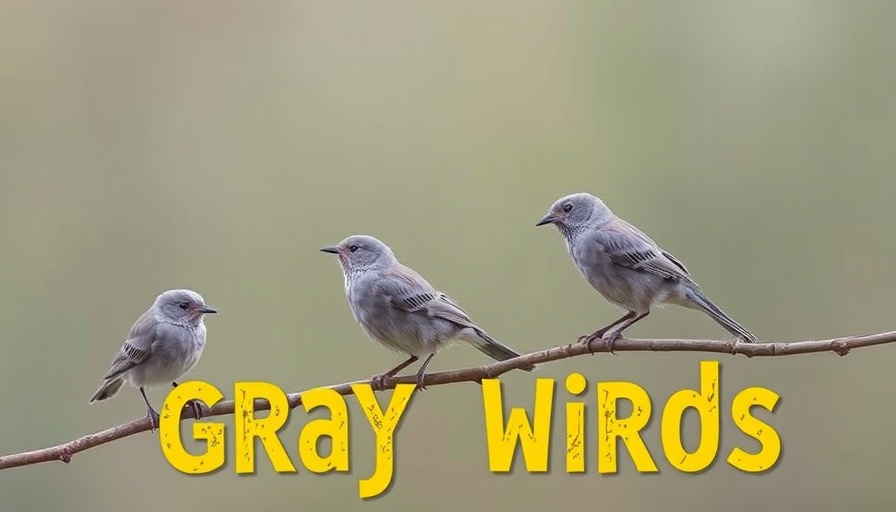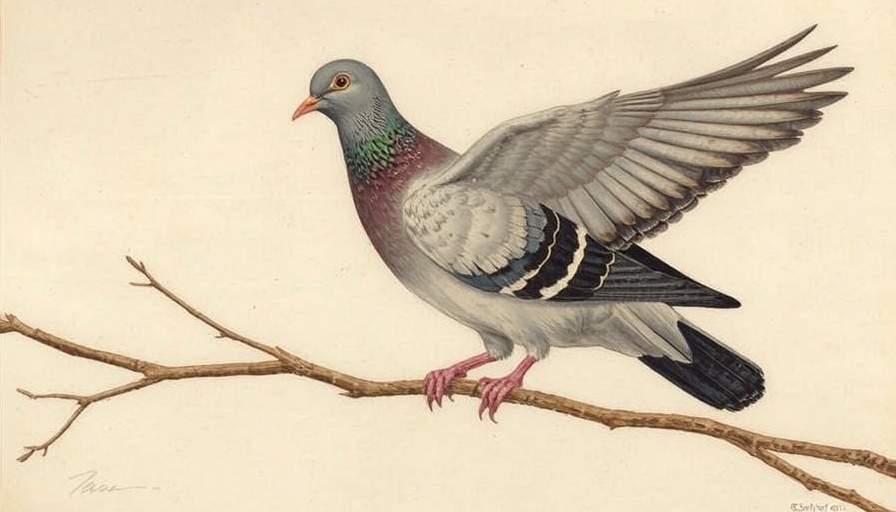
Celebrating Nature’s Palette: The Intriguing Range of Gray Birds
Bird enthusiasts often refer to gray birds simply by their predominant color, but delve deeper and you'll discover an array of unique descriptors that reflect the beauty and variation among these feathered friends. From the Gray Catbird, known for its kitten-like call and shades of gray, to the strikingly named Silvered Antbird found in the Amazon, these birds showcase nature's subtle artistry through their names alone.
Unraveling the Shades: More Than Just Gray
The vocabulary used to describe these avian creatures can be both quirky and enlightening. For instance, plumbeous resonates with its Latin origins—meaning lead—apt for the Plumbeous Vireo with its cool-toned feathers. On the other hand, glaucous reflects a bluish shade, exemplified through the Glaucous Gull and Glaucous Tanager. Such terms not only convey color but also evoke an appreciation for the subtle beauty found in nature.
The Cultural Significance of Bird Names
Understanding the colorful nomenclature of gray birds opens a window into cultural perceptions and the poetic nuances of language. These names often mirror the landscapes where these birds thrive, illustrating a harmony between nature and human expression. They serve as reminders of biodiversity and the intricate ecosystems we are part of, connecting birdwatchers and nature lovers through shared admiration for the avian world.
A Look at Bird Conservation Strategies
In a world increasingly challenged by environmental degradation, recognizing the importance of gray birds highlights broader conservation needs. Simple appreciation for these creatures encourages proactive efforts in conservation. Bird enthusiasts can take actionable steps, participating in birdwatching, supporting conservation organizations, or even contributing according to local engagement opportunities. Every effort counts in preserving these beautiful species that add vibrancy to our ecosystems.
Join the Celebration!
BirdNote’s upcoming events and interactive experiences provide an excellent opportunity for those who love avian creatures to deepen their connection with birds. Engaging with the community, such as attending illustration battles or educational talks, enriches our understanding and appreciation of the natural world.
In a time when meaningful connections with nature are more essential than ever, let’s celebrate the quirks and qualities that make gray birds such fascinating subjects of awe. Embrace the gray and cherish the diverse shades of avian life around us!
 Add Row
Add Row  Add
Add 




Write A Comment